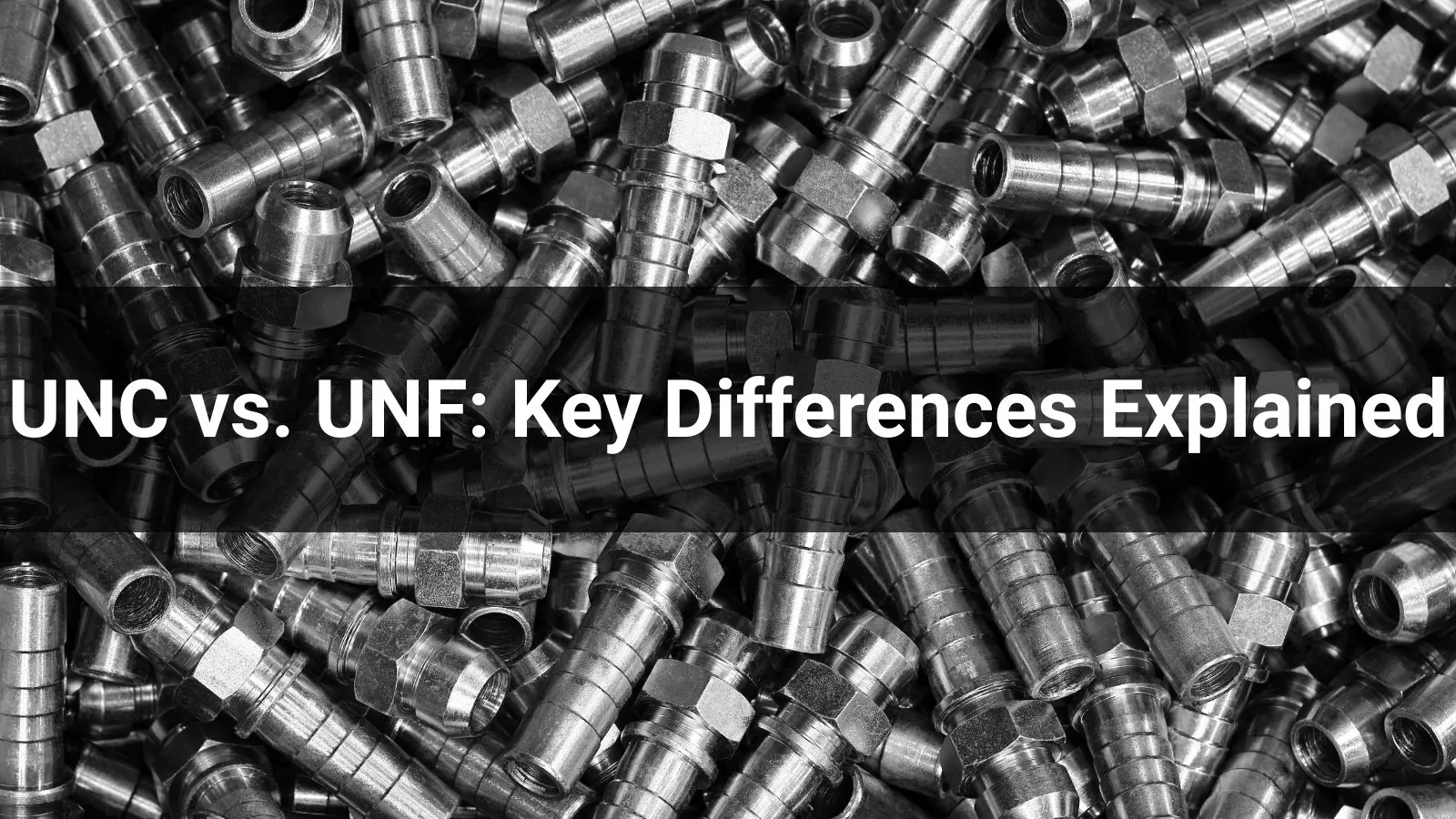UNC vs. UNF: Key Differences Explained

When selecting hydraulic fittings, understanding the difference between UNC (Unified National Coarse) and UNF (Unified National Fine) threads is critical. Each thread type offers distinct mechanical characteristics and advantages, which can impact sealing performance, vibration resistance, and ease of maintenance.
What You Will Learn
- Thread Terminology Basics
- What is a UNF Thread?
- What is a UNC Thread?
- UNC vs. UNF: Core Differences
- When to Choose UNF or UNC
- How to Identify UNC and UNF Threads
- Hydraulic Threaded Fittings from HGW Hydraulics
Thread Terminology Basics
- Pitch: Threads per inch (TPI), a finer pitch improves sealing.
- Major Diameter: The outermost diameter of the thread.
- Minor Diameter: The innermost diameter of the thread.
- Thread Form: Cross-sectional geometry of the thread, typically 60° angle in UNC/UNF.
- Lead: Axial advance per turn.
What is a UNF Thread?
UNF threads are fine-pitch threads, offering better vibration resistance, tensile strength, and sealing ability—suitable for aerospace, automotive, and hydraulic systems operating under high pressure.
Common UNF Sizes
| Nominal Size | TPI | Major Diameter (in) | Major Diameter (mm) | Tap Drill Size (mm) |
|---|---|---|---|---|
| 1/4"-28 | 28 | 0.250 | 6.35 | 5.50 |
| 3/8"-24 | 24 | 0.375 | 9.53 | 8.50 |
| 1/2"-20 | 20 | 0.500 | 12.70 | 11.50 |
| 5/8"-18 | 18 | 0.625 | 15.88 | 14.50 |
Advantages of UNF
- High tensile strength
- Excellent sealing performance
- Resistance to vibration
Limitations
- More expensive to manufacture
- Harder to assemble; risk of cross-threading
What is a UNC Thread?
UNC threads have a coarser pitch, making them easier and faster to assemble. They are commonly used in general-purpose applications and equipment requiring frequent maintenance.
Common UNC Sizes
| Nominal Size | TPI | Major Diameter (in) | Major Diameter (mm) | Tap Drill Size (mm) |
|---|---|---|---|---|
| 1/4"-20 | 20 | 0.250 | 6.35 | 5.35 |
| 3/8"-16 | 16 | 0.375 | 9.53 | 8.25 |
| 1/2"-13 | 13 | 0.500 | 12.70 | 11.15 |
| 5/8"-11 | 11 | 0.625 | 15.88 | 14.05 |
Advantages of UNC
- Quick and easy to install
- Lower cost
- Ideal for softer materials
Limitations
- Lower sealing ability
- Less resistant to vibration
UNC vs. UNF: Core Differences
- Thread Pitch: UNF is finer; UNC is coarser.
- Performance: UNF for high precision and sealing; UNC for general use.
- Durability: UNF performs better under vibration.
When to Choose UNF or UNC
Choose UNF When:
- Application involves vibration or high pressure
- You need precise thread engagement
- You're working in aerospace or automotive
Choose UNC When:
- Quick assembly is key
- Budget-sensitive project
- Used in maintenance-heavy systems
How to Identify UNC vs UNF Threads
- Use a thread gauge to measure TPI
- Visually inspect: UNF threads are closer together
- Check manufacturer markings
Hydraulic Threaded Fittings from HGW Hydraulics
HGW Hydraulics specializes in producing high-quality threaded fittings compatible with both UNC and UNF standards. Our components are precision-machined, corrosion-resistant, and tested for reliable sealing under pressure.
Whether you require high-tolerance UNF fittings for aerospace-grade equipment or robust UNC fittings for industrial maintenance systems, HGW Hydraulics delivers dependable solutions backed by engineering expertise.
-
2025 Shanghai Bauma Exhibition China International Construction Machinery ExhibitionUpdate on 2024-12-25
-
2025 Las Vegas International Mining ExhibitionUpdate on 2024-12-25
-
Leading the High-End and Empowering the World | Bauma China 2025, Hgw Successfully ConcludedUpdate on 2024-12-25
-
Hgw's Multi-field Hydraulic Products Appeared at the Exhibition丨MINEXPOUpdate on 2024-12-25
-
2025 PTC ASIAUpdate on 2025-02-12
-
Top 10 Leading Hydraulic Fitting Companies in the World[2025 Updated]Update on 2025-02-27
-
Top 10 Global Suppliers of Hydraulic Hose FittingsUpdate on 2025-03-04
-
HGW's O-Ring Face Seal Fittings(ORFS): From Core to Best UseUpdate on 2025-03-08















